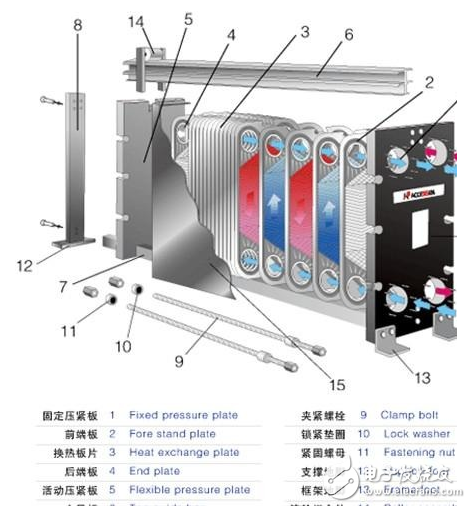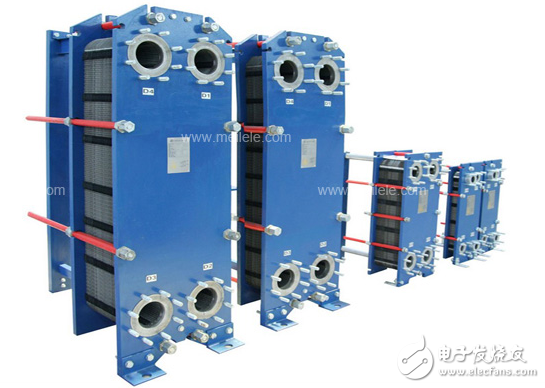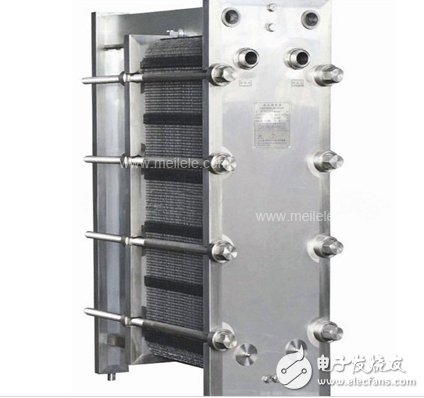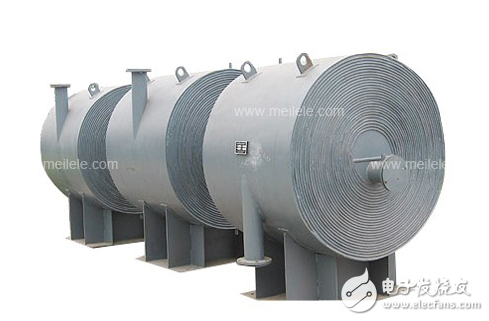Plate heat exchangers I believe that everyone knows that plate heat exchangers are a new type of high-efficiency heat exchangers. It stands out among many heat exchangers. It must have its unique place, then the working principle and structure of plate heat exchangers. What is it like? Xiaobian I will give you a brief introduction. Structural principle of plate heat exchanger The detachable plate heat exchanger is made up of many stamped corrugated sheets at regular intervals, surrounded by gaskets, and pressed by frame and compression screw, four plates and gaskets. The corner holes form a distribution tube and a collecting tube of the fluid, and at the same time, the cold and hot fluids are reasonably separated to flow in the flow paths on both sides of each of the sheets, and heat exchange is performed through the sheets. The plate heat exchanger is a new type of high efficiency heat exchanger which is assembled from a series of metal sheets with a certain corrugated shape. A thin rectangular channel is formed between the various sheets, and heat exchange is performed through the half sheets. Compared with the conventional shell-and-tube heat exchanger, the heat transfer coefficient is much higher under the same flow resistance and pump power consumption, and there is a tendency to replace the shell-and-tube heat exchanger within the applicable range. The plate heat exchanger is a heat exchanger which is formed by pressing a thin metal plate into a heat exchanger plate having a certain corrugated shape, and then stacking and fastening with a splint and a bolt. A thin rectangular channel is formed between the various sheets, and heat exchange is performed through the half sheets. The working fluid flows through the narrow, tortuous passage formed between the two sheets. The hot and cold fluid passes through the flow passage in turn, and a partition plate in the middle separates the fluid and exchanges heat through the plate. The structure and heat exchange principle of the plate heat exchanger determine its compact structure, small footprint, high heat transfer efficiency, large operational flexibility, wide application range, low heat loss, and convenient installation and cleaning. The basic structure of the plate heat exchanger The plate heat exchanger is mainly composed of two parts: the frame and the plate. Sheets Sheets made of various materials are pressed into corrugations of various shapes by various types of abrasive tools, and angular holes are formed in the four corners of the sheet for the flow path of the medium. The periphery of the plate and the corner hole are sealed with a rubber gasket. The frame is composed of a fixed pressing plate, a movable pressing plate, upper and lower guide bars, and clamping bolts. The plate heat exchanger is formed by superimposing the plates in the middle of the fixed pressing plate and the movable pressing plate, and then clamping them with clamping bolts. In the design and selection of the plate heat exchanger, there is a certain requirement for the pressure drop, so it should be checked. If the check pressure drop exceeds the allowable pressure drop, the design selection calculation must be repeated until the process requirements are met. The above is the relevant introduction of the plate heat exchanger working principle. Under normal circumstances, we mainly distinguish the plate heat exchangers according to the structure, that is, according to the shape to distinguish, can be divided into four categories: 1 detachable plate heat exchanger (also known as plate heat exchanger with gasket), 2 welded plate heat exchanger, 3 spiral plate heat exchanger, 4 plate coil heat exchanger (also called honeycomb heat exchanger). Among them, the welded plate heat exchanger is further divided into: a semi-welded plate heat exchanger, an all-welded plate heat exchanger, a plate-shell heat exchanger, and a brazed plate heat exchanger. 1) Refrigeration: used as a condenser and evaporator. 2) HVAC: intermediate heat exchangers used in boilers, intermediate heat exchangers in high-rise buildings, etc. 3) Chemical industry: soda ash industry, ammonia synthesis, alcohol fermentation, resin synthesis cooling, etc. 4) Metallurgical industry: heating or cooling of aluminate mother liquor, cooling of steelmaking process, etc. 5) Machinery industry: various quenching liquid cooling, reducer lubricating oil cooling, etc. 6) Power industry: high-voltage transformer oil cooling, generator bearing oil cooling, etc. 7) Paper industry: heat recovery in bleaching process, heating of washing slurry, etc. 8) Textile industry: cooling of viscose aqueous solution, boiling nitrocellulose cooling, etc. 9) Food industry: juice sterilization cooling, animal and vegetable oil heating and cooling. 10) Grease process: The soap base is dried at normal pressure, and the various process liquids are heated or cooled. 11) Central heating: heating in the waste heat of the thermal power plant, heating the bath water. 12) Others: petroleum, medicine, ship, seawater desalination, geothermal utilization, solar energy utilization. 



